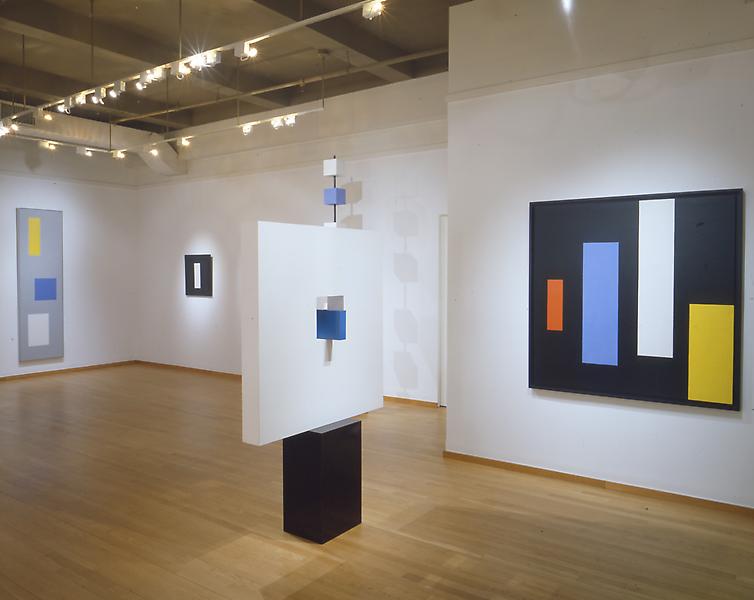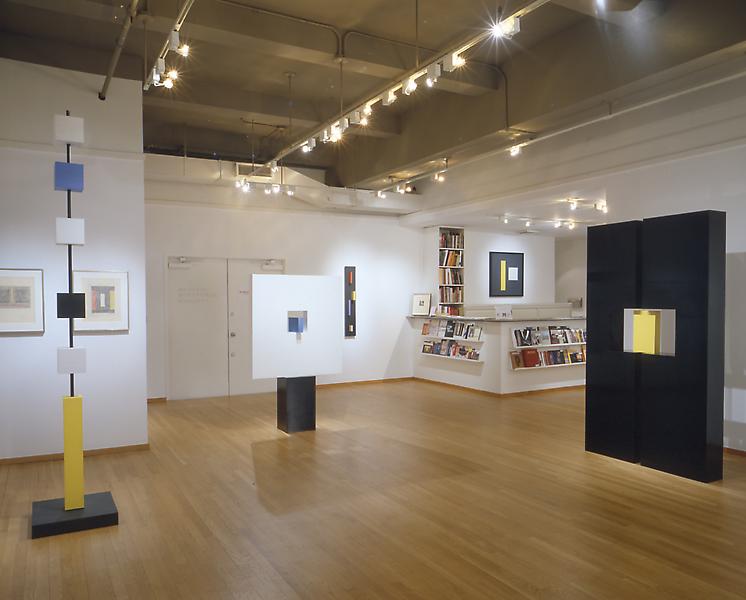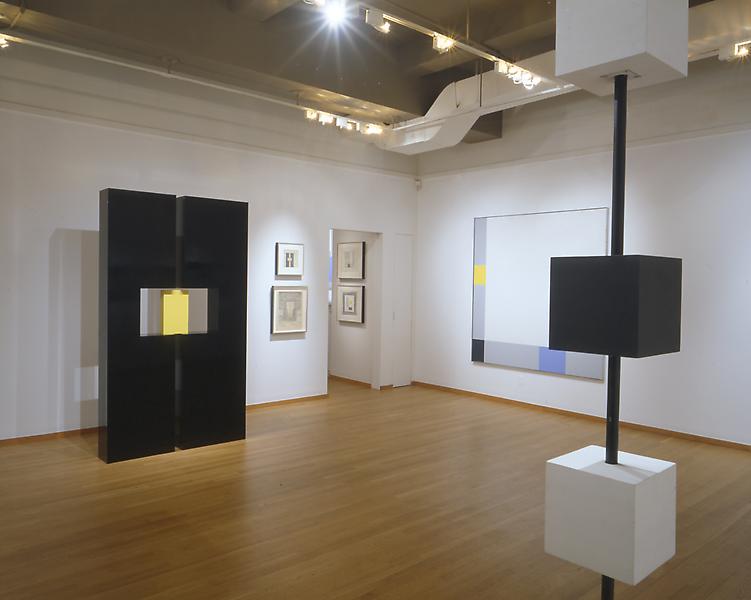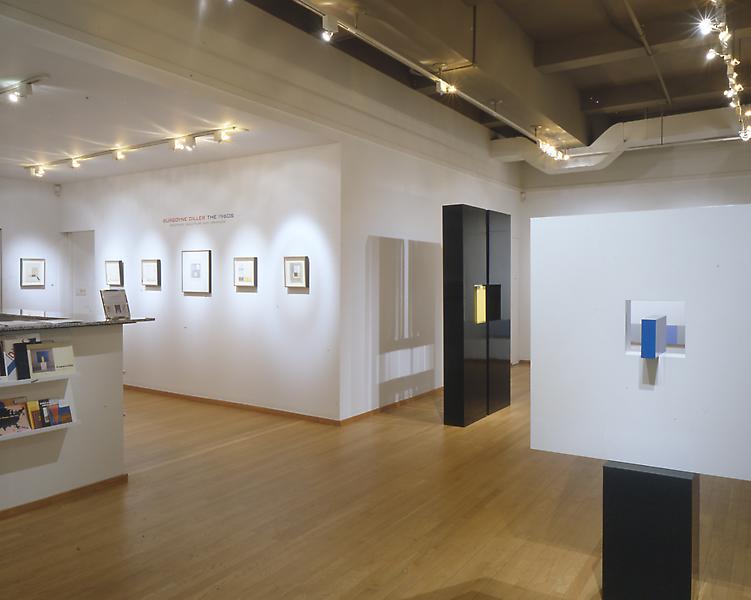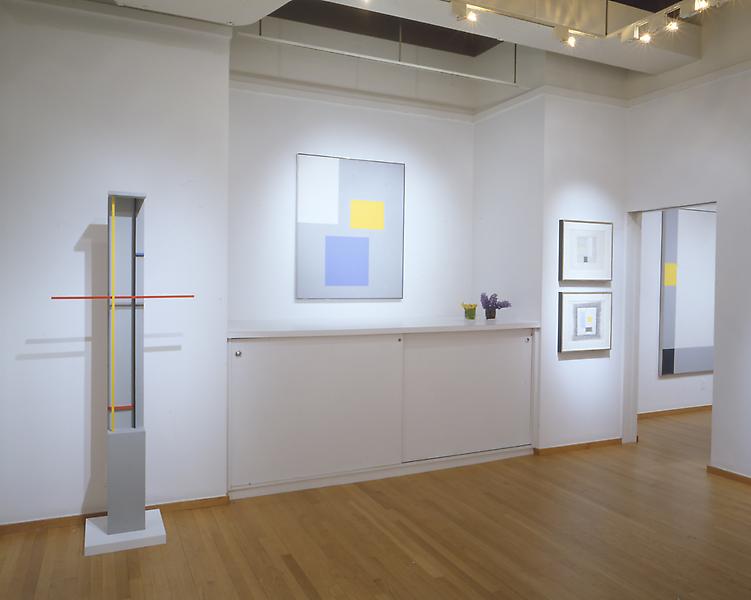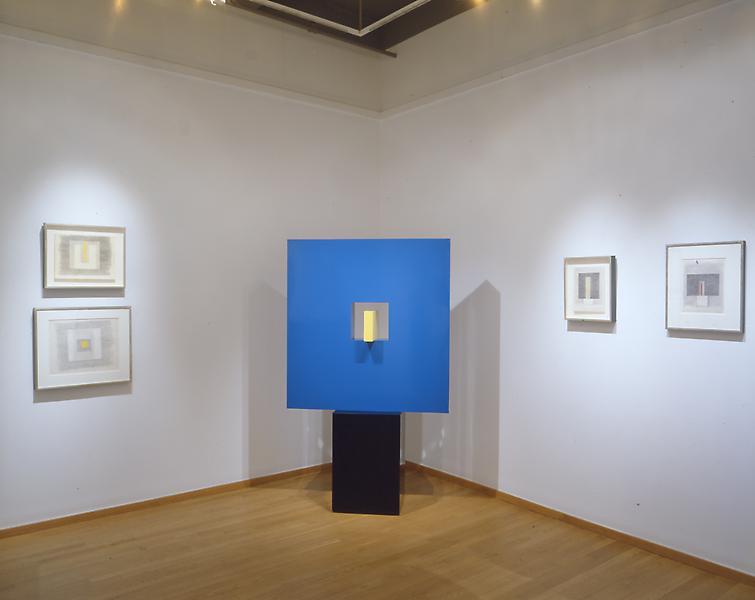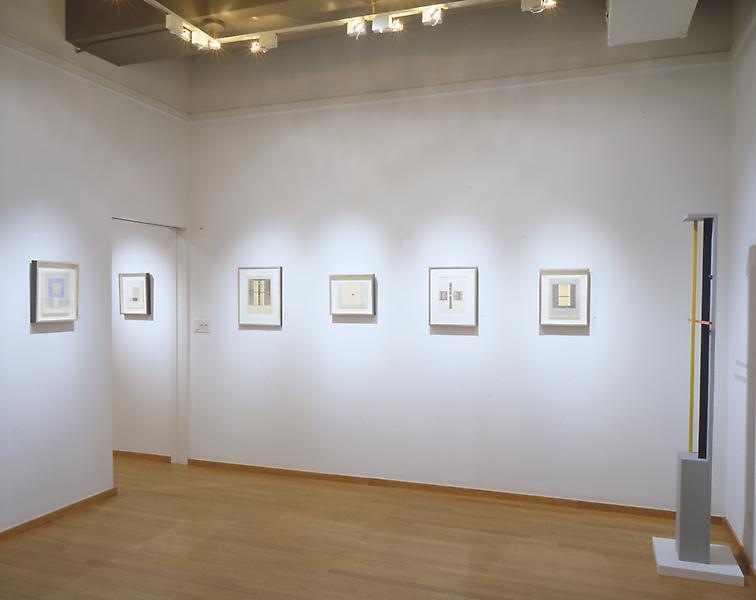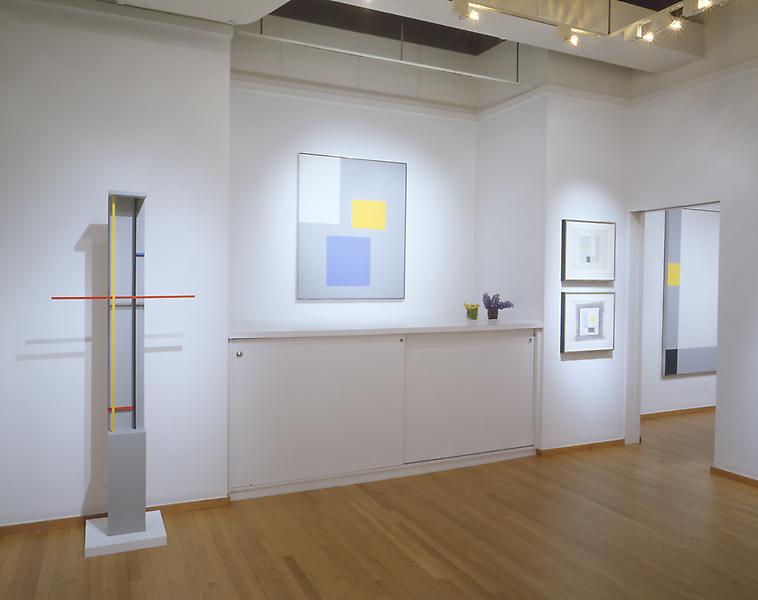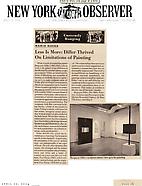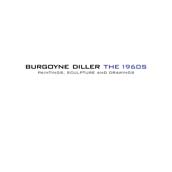Michael Rosenfeld Gallery is pleased to present its fifth solo exhibition featuring the geometric abstractions of American artist Burgoyne Diller (1906-1965). This exhibition includes major paintings, sculpture and drawings from the 1960s - the most fertile period of Diller's career.
During the 1960s, Burgoyne Diller re-emerged on the New York art scene. Despite his failing health, Diller worked tirelessly to advance his pictorial ideas, intentionally employing a limited range of forms to express himself. In 1962 Diller introduced a new format in his "first theme" paintings consisting of white, black, yellow and blue squares arranged on a grey field. Furthermore, his most well known paintings of geometric forms on solid black backgrounds were completed during this period. Although Diller had been creating wooden sculptures since the 1930s, in 1963 he made a major breakthrough by using the manmade material of Formica, which reflected light and gave his sculpture a serene quality.
March 19 – May 8, 2004
Artists
Press
Publications
Press Release
Toward the end of his life, Diller intended to move beyond Formica by transforming his designs for sculpture into granite, but his death in 1965 prevented that. Even though Diller's bold plans were never realized, his commitment to abstraction made him a model for a generation of abstract artists, while his elegant geometric abstractions served as a bridge between modernism and the work of Minimalist artists such as Donald Judd, Sol Lewitt and John McCraken.
This exhibition is accompanied by a fully illustrated color catalogue with an essay Barry Schwabsky, a regular contributor to Artforum, and the author of The Widening Circle: Consequences of Modernism in Contemporary Art (Cambridge University Press, 1997), and Opera: Poems 1981-2002 (Meritage Press, 2003).

